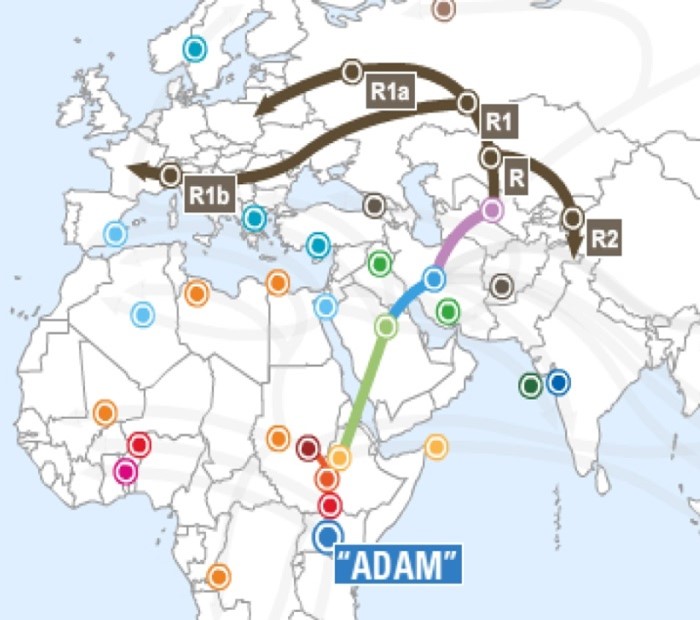Number 4 in a series on DNA by Nancy A. Nolette, VFA #1702
Our DNA is comprised of 23 pairs of chromosomes. The first 22 pairs match because they contain essentially the same DNA inherited from both parents. The 23rd pair is different because in men, the pair does not match. This chromosome pair contains the “sex” chromosomes, named X and Y. Typically, women have two X chromosomes and men have one X and one Y chromosome.
Our genetic sex is determined by which chromosome you inherited from your father. If you are genetically male, you received a copy of your father’s Y chromosome. If you are genetically female, you received a copy of the X chromosome from both of your parents. Therefore, the sole purpose of the Y chromosome is to create the male species.
According to new research, our most recent male common ancestor, “Y DNA Adam,” lived in Africa 208,300 years ago. Most Eurasian men, from outside of Africa, are descended from a man who lived 69,000 years ago. Additionally these Eurasian/non-African men can trace their ancestry back to four ancestors who lived there 50,000 years ago.
DNA was analyzed from 1,007 males from 25 European and Middle-Eastern countries. Clusters were identified and when compared with mtDNA the data supported one another by telling the same story. Looking at our gene pool 20% derived from the Stone Age farmers in the last 12,000 years and 80% came from the Old Stone Age hunters that began 3.3 million years ago creating the main source of modern day Europeans.
Researchers have designated 20 Y chromosome haplogroups from A to R to identify the descendancy of “Y DNA Adam.”
The bulk of Haplogroup R is represented by M173 which likely originated on the Eurasian Steppes. R1 has two descendants: R1a and R1b.
Haplogroup R1a is associated with the Indo-Iranian and Balto-Slavic peoples and is now found primarily in Central Asia, South Asia, and Eastern Europe.
Haplogroup R1b is the dominant Haplogroup of Western Europe males and also found sparsely distributed among various peoples of Asia and Africa. R1b1a2 is the Haplogroup that is most commonly found among modern Western European male populations and has been associated with the Italo-Celtic and Germanic peoples. The most common Haplogroup for the British Isles and Western Europe is the Atlantic Model: R1b1c6.
Below is a chart showing the migration and location of Haplogroup R. 40% of today’s Western European males belong to Haplogroup R1b. Due to immigration patterns, our North American fathers are primarily their descendants.

History has revealed that men were the band’s primary source of hunting for food and protection from predators. They engaged in local security, then later wars, that reduced their numbers. On average the birth rate of males increased afterwards to replenish these losses.
Now for a few interesting facts about our ancestors. Many have thought that Neanderthals are extinct. However, they live inside many of us. A few percent of DNA in Europeans, Asians and other non-African groups show Neanderthal in origin. At some point in genetic history Neanderthals mated with modern humans.
Atilla-the-Hun had an influence on the land mass he conquered. Some researchers believe that Attila-the-Huns’ hoards left a significant influence on these populations as shown in the spread of Haplogroup R. An added feature is a small blue-ish birthmark called a “Mongolian spot” appears on the lower back of their present day descendants. For those affected it is present at birth and usually disappears within months and definitely by the teens.
The series continues. . .

